|
|
|
 |

 |
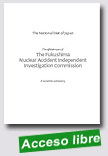 |
The official report of The Fukushima Nuclear Accident Independent Investigation Commission - Executive Summary
The National Diet of Japan, July 2012, 88 p.
The TEPCO Fukushima Nuclear Power Plant accident was the result of collusion between the government, the regulators and TEPCO, and the lack of governance by said parties. They effectively betrayed the nation’s right to be safe from nuclear accidents. Therefore, we conclude that the accident was clearly “manmade.” We believe that the root causes were the organizational and regulatory systems that supported faulty rationales for decisions and actions, rather than issues relating to the competency of any specific individual.
|
Extraído de:
http://naiic.go.jp/wp-content/uploads/2012/07/NAIIC_report_lo_res2.pdf
|
 |
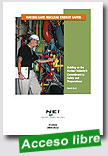 |
Making Safe Nuclear Energy Safer: Building on the Nuclear Industry's Commitment to Safety and Preparedness
Nuclear Energy Institute, March 2012, 10 p.
The nuclear energy industry’s primary and constant goal is to make safe nuclear energy facilities even safer. A decades-long commitment to safety and continuous learning is reflected in the operational focus and safety culture at our facilities. Companies that operate 104 U.S. reactors review safety procedures continually and update their facilities and training programs with lessons learned from those reviews.
|
The industry has a commitment to safety because nuclear energy is a vital part of America’s electricity portfolio. It helps achieve greater energy independence for America and produces affordable, reliable electricity for one of every five Americans. Safety is the foundation of a thriving nuclear energy industry in America and globally—with more than 430 reactors producing electricity and 65 plants under construction.
After the March 11, 2011, earthquake and tsunami in Japan, the U.S. nuclear power industry is looking even more closely at ways to ensure safety is maintained in the face of extreme natural events. The U.S. industry and our global partners took immediate actions after the events in Japan, both to support the recovery of the Fukushima Daiichi reactors and to review critical safety systems at U.S. reactors. While we continue to monitor the situation closely and to learn from it, the nuclear energy industry in the United States is already implementing numerous measures to maintain and upgrade the already-high level of safety at nuclear energy facilities.
The nuclear energy industry in February unanimously approved an initiative to procure additional on-site portable equipment that will help ensure that every nuclear energy facility can respond safely to extreme events, no matter what the cause.
Companies that operate America’s nuclear energy facilities have acquired or ordered more than 300 pieces of major equipment to supplement layer upon layer of safety at the nation’s commercial reactors. The industry initiative commits every company to order or enter into contract for a plant-specific list of additional emergency equipment by March 31.
The equipment ranges from diesel-driven pumps and electric generators to ventilation fans, hoses, fittings, cables and communications gear. It also includes support materials for emergency responders. The equipment will supplement emergency equipment acquired by the industry in recent months and after the 9/11 terrorist attacks to help facilities safely respond to large fires and explosions.
Extraído de:
http://www.nei.org/resourcesandstats/documentlibrary/
safetyandsecurity/whitepaper/making-safe-nuclear-energy-
safer-building-on-the-nuclear-industrys-commitment-to-safety-and-preparedness/?utm_source=Paulo%27s+Corner+Daily+Nuclear+News+
Digest&utm_campaign=aca36893ad-RSS_EMAIL_CAMPAIGN&utm_medium=email
|
 |
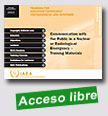 |
Communication with the Public in a Nuclear or Radiological Emergency – Training Materials
IAEA Emergency Preparedness and Response, 2012, s. p.
The IAEA training course on Communication with the Public in a Nuclear or Radiological Emergency was developed by the IAEA Incident and Emergency Centre (IEC). It is a 5-day training course, which can be delivered at the national or regional level in IAEA Member States.
The course consists of lectures, work sessions and a tabletop exercise. The course is led by two experts who deliver the lectures and facilitate the work sessions and tabletop exercise. |
Extraído de:
http://www-pub.iaea.org/MTCD/Publications/PDF/EPR-Communcation-Manual/Start.pdf
|
 |
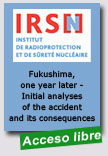 |
The earthquake of magnitude 9 of March 11, 2011 with an epicenter 80 km east of the Japanese island of Honshu, and the subsequent tsunami, severely affected the region of Tohoku, with major consequences for its population and infrastructure.
Devastating the site of the Fukushima Dai-ichi nuclear power plant, these natural events were the cause of the core |
meltdowns of three nuclear reactors and the loss of cooling of several spent fuel pools. Explosions also occurred in reactor buildings 1 through 4 due to hydrogen produced during fuel degradation. Very significant radioactive releases into the environment took place. The accident was classified level 7 on the International Nuclear Event Scale (INES).
This report provides an assessment and perspective on the information gathered by IRSN during the first twelve months following the disaster in an effort to understand the condition of the installations, evaluate the releases and analyze and evaluate the consequences of the accident on workers and the impact on the population and the environment.
On the basis of available information, the report provides an initial analysis of the chain of events. It should be noted that a year after the accident, the full sequence of events is still not understood. Operating experience feedback from the 1979 Three Mile Island accident in the United States, in which reactor core damage was not confirmed until 1986, suggests that it may be several years before a detailed scenario can be constructed of the accident that led to radioactive releases. It will require access to the damaged installations. The situation at the site remains dangerous (reactor pressure vessels and containments are not leaktight, diffuse
releases, etc.). If it has significantly improved as a result of the significant resources deployed by the Tokyo Electro Power Company (TEPCO) to regain control of the installations, this effort must continue over the long term to begin evacuation of fuel from pools (in two years) and remove degraded fuel from reactors (in ten years), as has been announced.
An assessment of quantities of radioactive releases to the air and water as well as their dispersion is given here but must be considered provisional. It should be noted that a significant effort has been made in Japan to characterize environmental contamination, which has greatly diminished in the weeks and months following the accident due to the virtual disappearance of short-lived radionuclides. The highest risks for the population were concentrated in the initial months. Today and for years to come, the environment remains contaminated by radioactive cesium that will complicate the return of evacuated residents to the most contaminated regions. Removing residual deposits will be a difficult, long and waste-producing process. Another long-term impact may remain for the agricultural production in the most contaminated regions; it may be reduced using appropriate practices and close monitoring. Natural environments (forests) will remain the most vulnerable over time, also because of cleanup difficulties.
With regard to the health aspects of the disaster, IRSN’s work concerned initial assessments of doses the Japanese population may have received during the release phase and external exposure to radioactive deposits during the first year after the accident. The various epidemiological monitoring studies on the Japanese population carried out locally are presented. According to Japanese authorities, received doses are less than 100 mSv. Although it is not certain that at this dose level an excess of the risk may be detected by epidemiological studies, these studies are nevertheless indispensable because they respond to a legitimate demand by the population. They also provide new information about exposure to low doses of ionizing radiation. There is however a lack of measurements for exposed persons, especially children exposed to radioactive iodine.
To date, the Japanese authorities have not provided any report on health consequences observed in workers. The only currently available information on doses received by workers is that provided by TEPCO for its employees and subcontractors involved in operations at the Fukushima Dai-ichi nuclear power plant. No precise information concerning the other categories of exposed workers (firemen, police officers, municipal employees, civilian
security personnel) has been obtained, even though at least some of these workers have undergone dosimetric monitoring. To date no deterministic effect attributed to acute exposure to radioactivity has been observed, however it is very difficult at present to obtain precise information about worker exposure and its health effects.
The present report also describes work launched in 2011 by the United Nations Scientific Committee on the Effects of Atomic Radiation (UNSCEAR) with a view to producing an initial report on assessing exposure levels in the environment and populations related to the accident at the Fukushima Dai-ichi nuclear power plant and the consequences for human health.
Extraído de:
http://www.irsn.fr/EN/publications/technical-publications/Documents/IRSN_Fukushima-1-year-later_2012-003.pdf |
 |
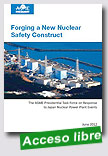 |
Forging a New Nuclear Safety
ASME Presidential Task Force on Response to Japan Nuclear Power Plant Events, June 2012, 111 p.
In light of the recent nuclear accident in Fukushima, Japan, ASME has examined the safety consequences towards a "new nuclear safety construct." It formed a Presidential Task Force on a "Response to Japan Nuclear Power Plant Events," plus a Task Group for a "Design Basis and Response to Severe Accidents." These two teams both represent a balance of interests drawn from among nuclear industry leaders, regulators and technical
|
experts best positioned to evaluate lessons learned and not learned from over 50 years of power-reactor operations, and to make industry recommendations.
This new nuclear safety construct seeks to better serve society and provide a platform for enhancing nuclear power plants worldwide.
Based on a review of the disaster in Japan - including an assessment of causes, consequences and socio-political and economic impact - the ASME Presidential Task Force presented preliminary recommendations, at the U.S. Nuclear Regulatory Commission Regulatory Information Conference (RIC), for structuring a nuclear safety construct that serves global society.
Extraído de:
http://www.asme.org/kb/standards/publications/forging-a-new-nuclear-safety-construct |
 |
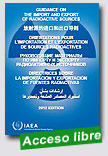 |
Guidance on the Import and Export of Radioactive Sources
IAEA, 2012, 146 p.
The objective of this Guidance is to improve the safety and security of imports and exports of radioactive sources in accordance with the provisions laid down in paragraphs 23–29 of the Code. With this objective in mind, this Guidance is not intended to impede international cooperation or commerce,
as long as these do not contribute to the use of such sources for purposes that threaten safety and security. Exporting and importing States should aim to follow this Guidance when deciding whether or not to authorize exports and imports of Category 1 and 2 sources. States should consider this Guidance in a manner consistent with their national legislation and relevant international commitments. |
Extraído de:
http://www-pub.iaea.org/MTCD/Publications/PDF/8901_web.pdf
|
 |
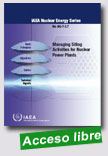
|
Managing Siting Activities for Nuclear Power Plants
IAEA Nuclear Energy Series, 2012, 76 p.
Together with the IAEA Safety Guides, the purpose of this publication is to help States ensure that appropriate sites for a nuclear power plant are identified, assessed and licensed, in a well-planned and efficient manner, taking into account all relevant factors. It is applicable to countries with existing nuclear facilities as well as those introducing a nuclear power programme. For those countries introducing nuclear power for the first time, this publication provides a framework for
|
managing siting activities within the development of a national infrastructure for nuclear power development. The objectives of this publication are to accumulate and disseminate information and guidance that will help to: identify and evaluate key issues that affect decisions on the suitability of a site for new nuclear power plants; establish a management framework for the planning, control, implementation, verification and coordination of all the siting activities.
This publication will provide the methodology and framework to enable States to develop a detailed and specific national process to meet the needs of all aspects of the siting process. It is intended that the publication of this report will lead to improvements in the selection of the best sites, the implementation of siting activities, and the efficiency of the regulatory and stakeholder review process.
Extraído de:
http://www.gengikyo.jp/english/shokai/Tohoku_Jishin/report_til20120106.pdf
|
 |
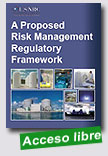 |
A Proposed Risk Management Regulatory Framework
Nuclear Regulatory Commission (NRC – US), April 2012, 318 p.
At the request of Chairman Gregory B. Jaczko, a task force headed by Commissioner George Apostolakis prepared this report. The task force’s charter was to develop a strategic vision and options for adopting a more comprehensive, holistic, risk-informed, performance-based regulatory approach for reactors, materials, waste, fuel cycle, and transportation that would continue to ensure the safe and secure use of nuclear material. The proposed risk management regulatory framework builds |
upon well established practices, such as the NRC’s defense-in-depth philosophy and its policies to incorporate risk-informed and performance-based approaches into the agency’s regulation and oversight of byproduct, source, and special nuclear materials. Risk management is being adopted by many different organizations, including Federal agencies, and would seem to be the logical next step in the evolution of the NRC’s regulatory programs. The report describes a proposed risk management regulatory approach that could be used to improve consistency among the NRC’s various programs and discusses implementing such a framework for specific program áreas.
Extraído de:
http://pbadupws.nrc.gov/docs/ML1210/ML12109A277.pdf
|
 |
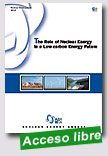 |
The Role of Nuclear Energy in a Low-carbon Energy Future
Nuclear Energy Agency (NEA), 2012, 96 p.
This report assesses the role that nuclear energy can play in supporting the transition to a low-carbon energy system. It begins by considering the greenhouse gas emissions from the full nuclear fuel cycle, reviewing recent studies on indirect emissions and assessing the impact that nuclear power could make in reducing greenhouse gas emissions. It provides estimates of the construction rates that would be needed to
|
meet the projected expansion of nuclear power foreseen by many energy scenarios published by international organisations. It then assesses the economic, technical, societal and institutional challenges represented by such an expansion to identify the most significant barriers. The capacity of nuclear power plants to operate in an electricity system with a large share of renewables, and the impact of smart grid technologies are also examined. Finally, long-term prospects for nuclear energy are discussed in terms of development of new reactor and fuel cycle technologies, non-electric applications and new operational and regulatory constraints that could arise as a consequence of climate change.
Extraído de:
http://www.oecd-nea.org/
|
 |
|
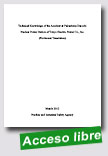
|
Technical Knowledge of the Accident at Fukushima Dai-ichi Nuclear Power Station of Tokyo Electric Power Co., Inc.(Provisonal Translation)
Nuclear and Industrial Safety Agency, March 2012, 84 p.
On March 11, 2011, Fukushima Dai-ichi Nuclear Power Station of Tokyo Electric Power Co., Inc., (hereinafter referred to as “Dai-ichi NPS”) lost all its power supply due to the 2011 off the Pacific coast of Tohoku Earthquake and the tsunami following it, and as a result, Dai-ichi NPS had a severe accident which led to the release of a vast amount of radioactive materials into the environment. Reflecting deeply that it failed to prevent that accident, the Nuclear and Industrial Safety Agency (NISA), as a nuclear safety and regulatory agency, must learn lessons from it to secure the safety of nuclear facilities. From this point of view, NISA has collected and organized the facts of the accident according to the sequence from the occurrence and subsequent outcome, as to the fullest extent posible as far as they have come to its knowledge, and accumulated the technical knowledge related to them. |
|
|
|
|
|
|
